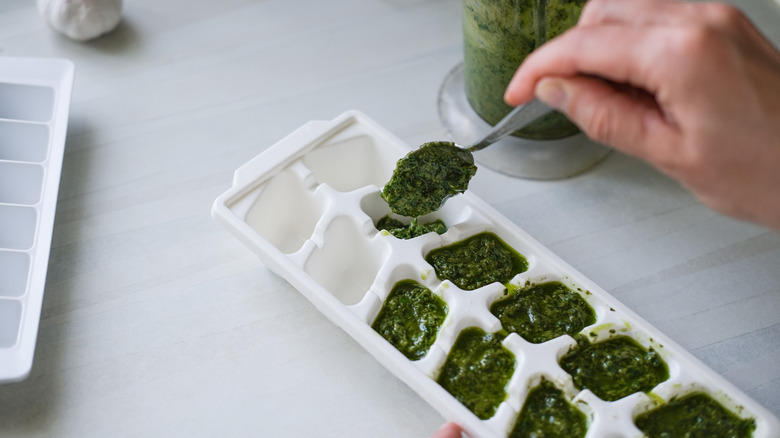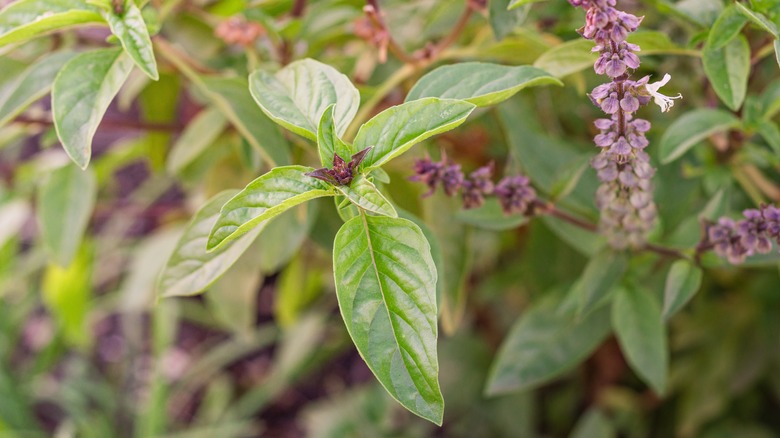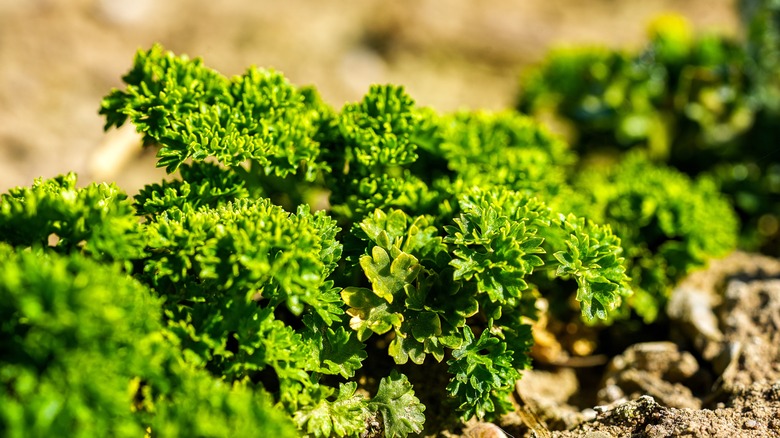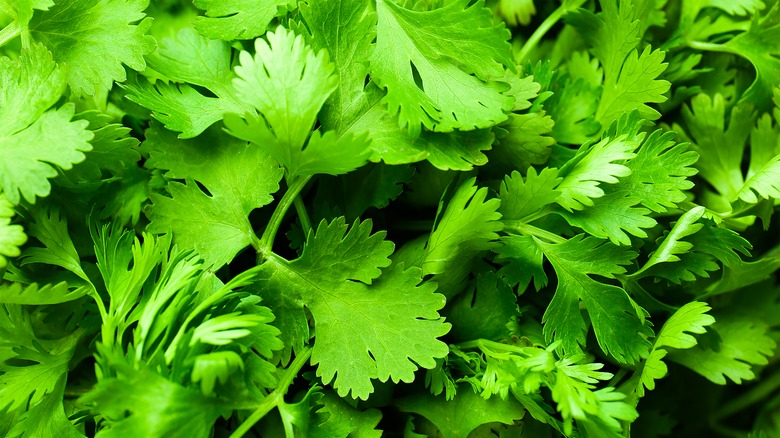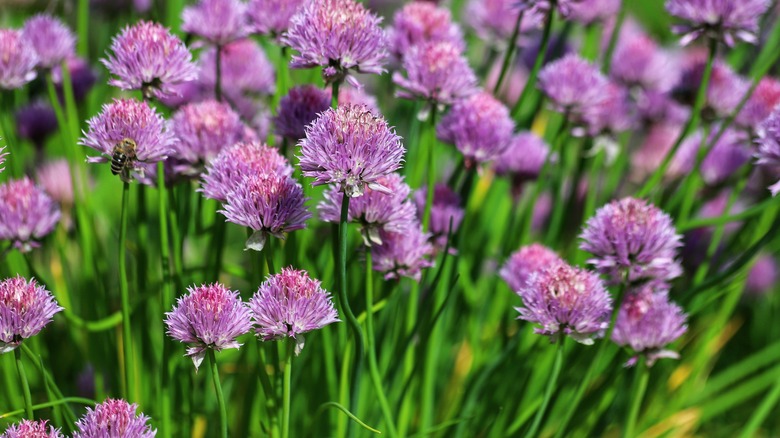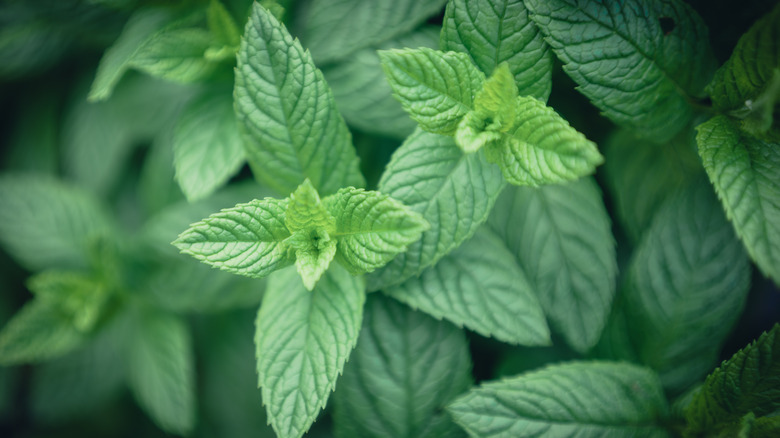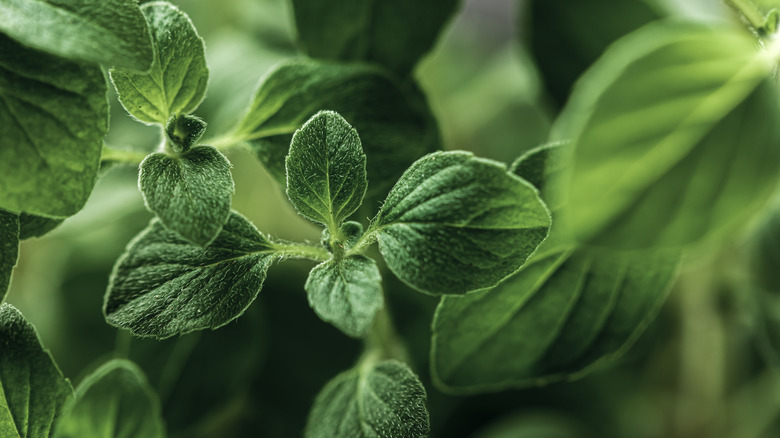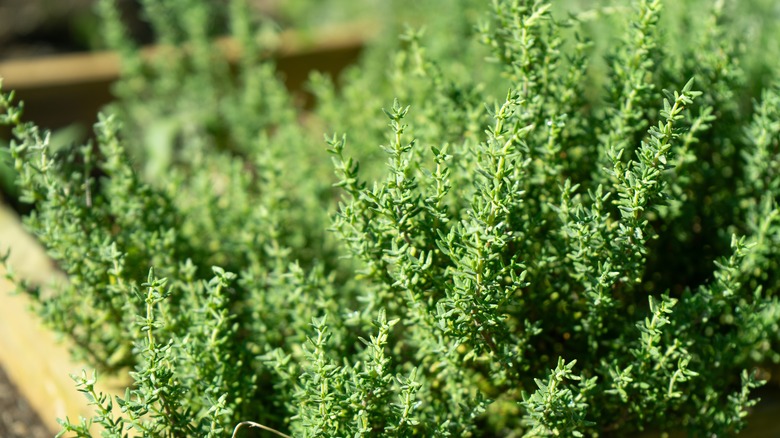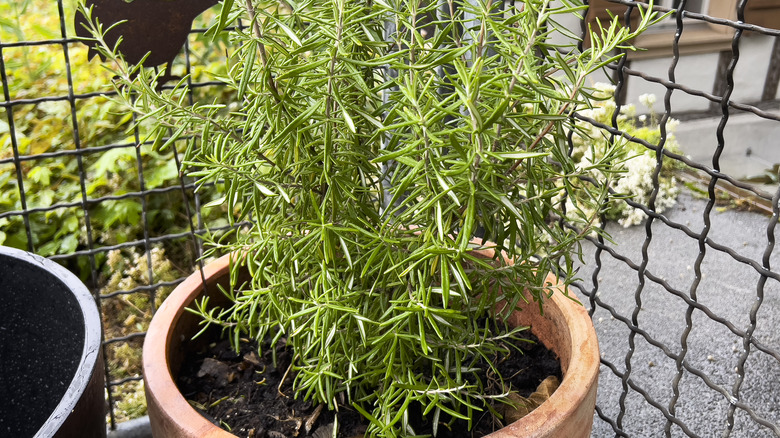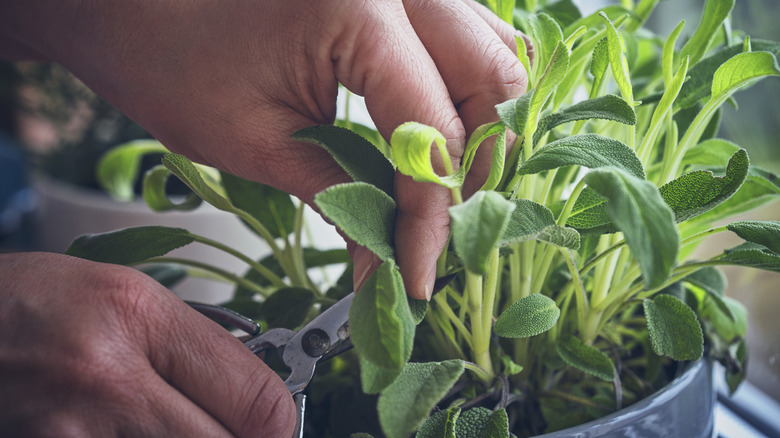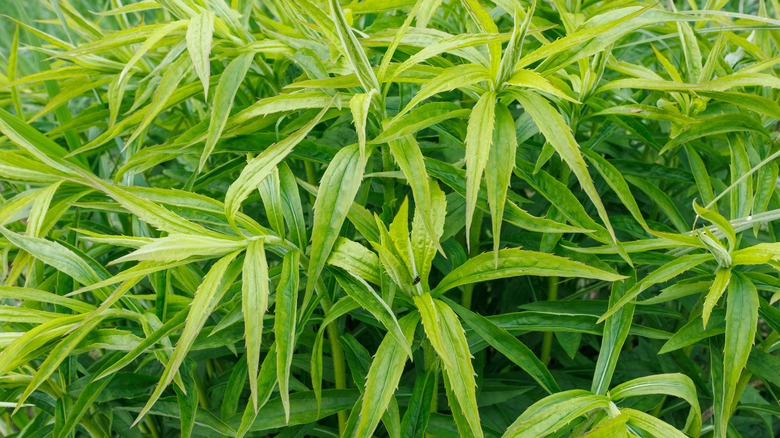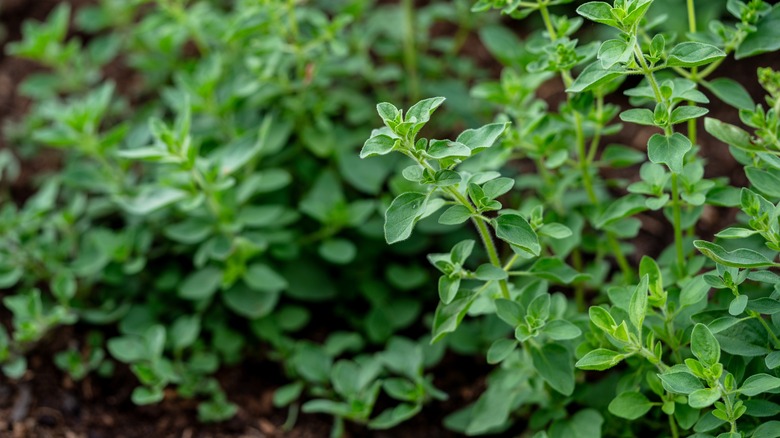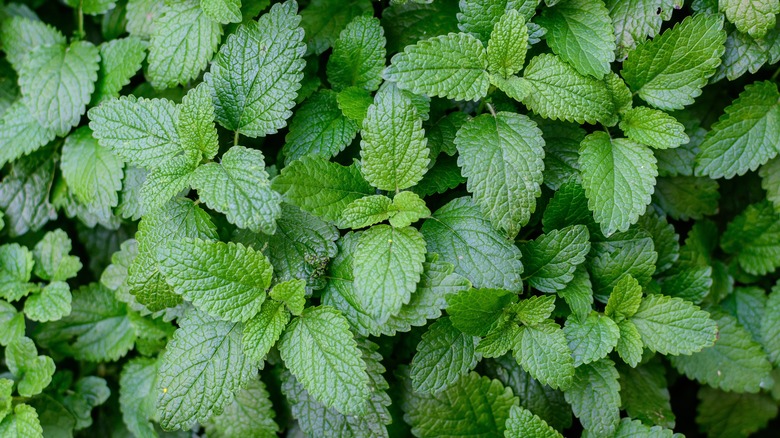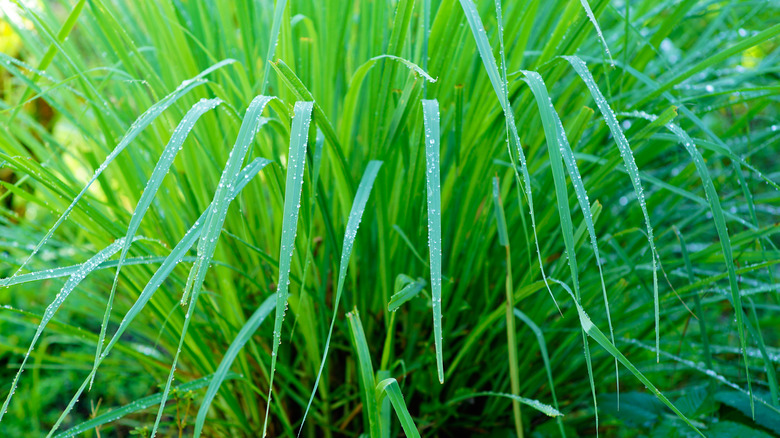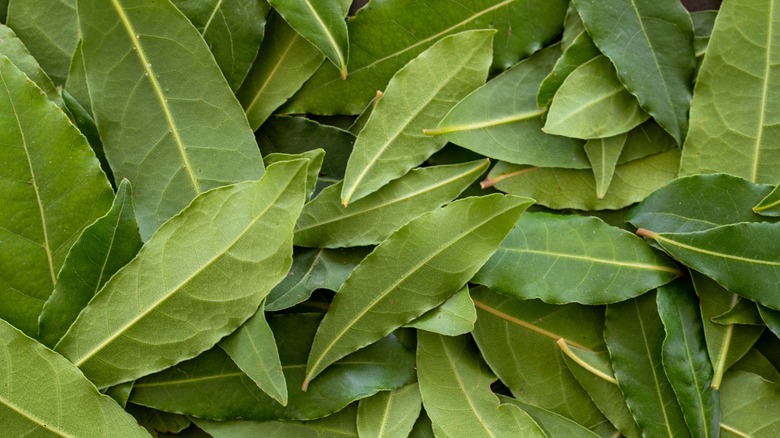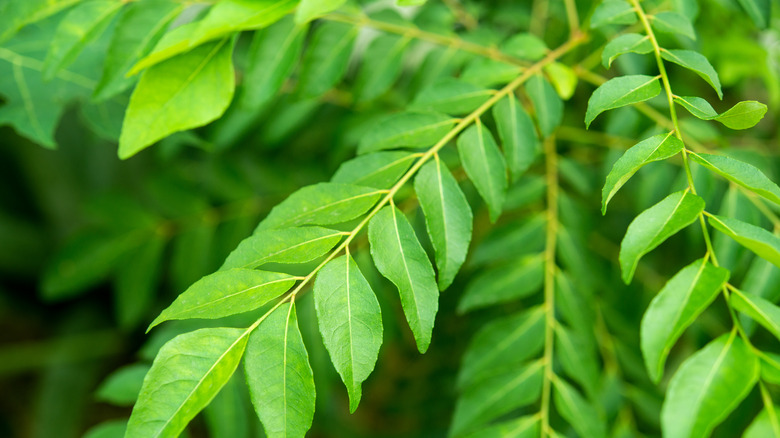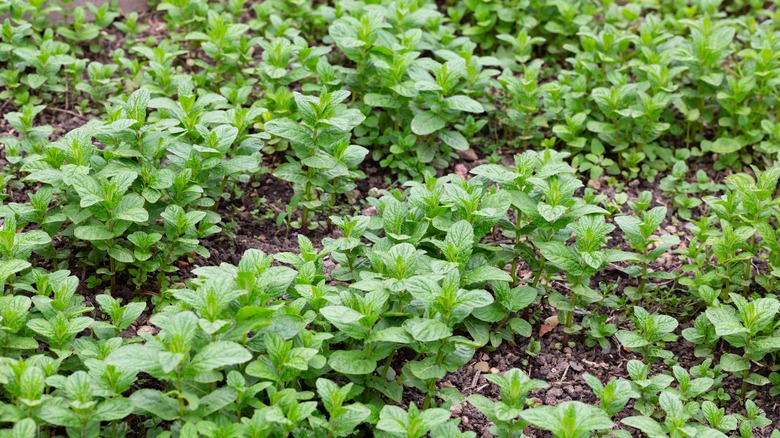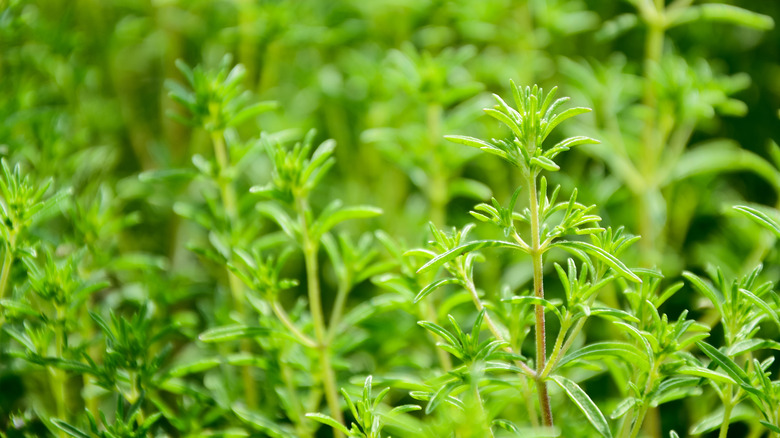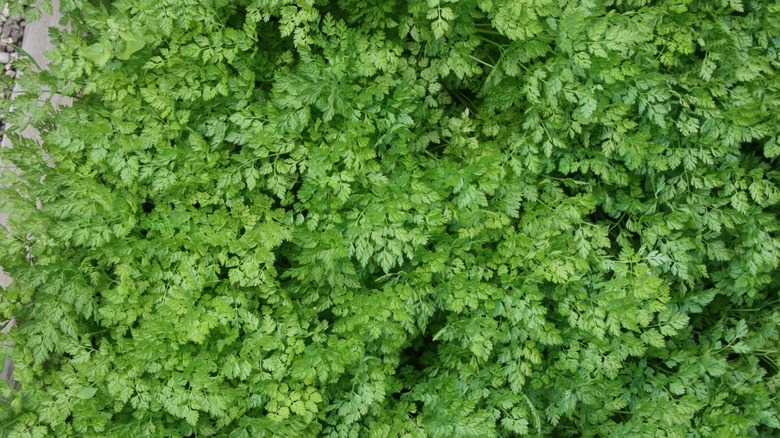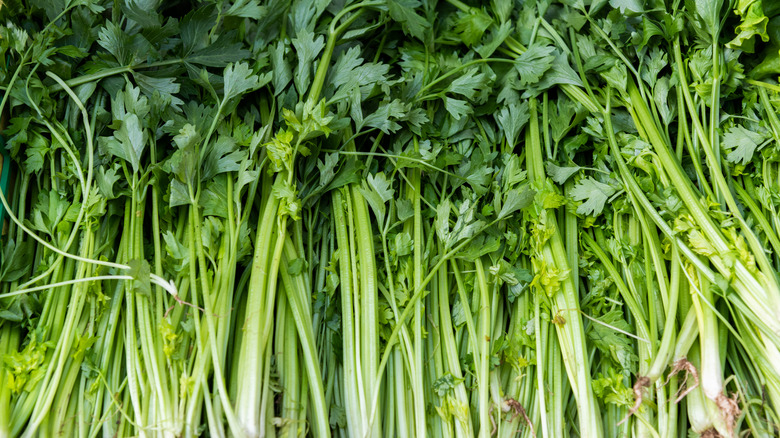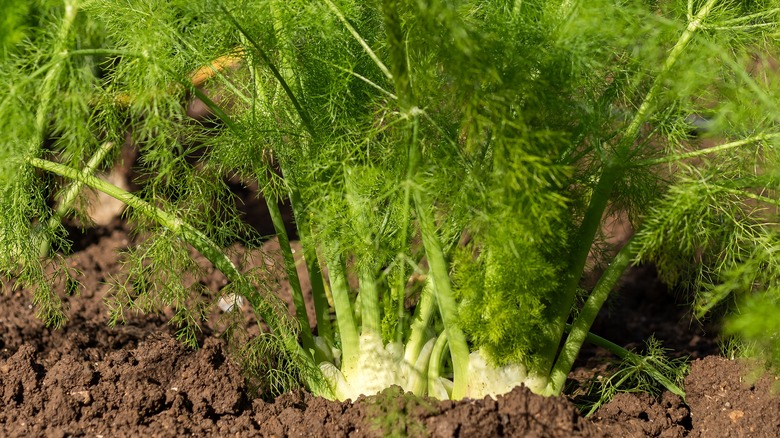20 Garden Herbs You Can Harvest & Store In The Freezer
Home gardeners often spend hours and hours of their time growing a thriving herb garden. However, herbs don't naturally grow all year round, so you will need to find a way to store them. There are many ways to store herbs, but freezing is generally the best option in most cases. It lets you retain their vibrant color, aroma, and flavor. This is especially true for tender-leaf herbs that can lose their character when dried. Also, when you freeze and store your herbs, it helps retain their essential oils.
This gives a taste that is close to fresh-picked when thawed. There are a number of garden herbs that respond well to freezing, such as basil, mint, parsley, tarragon, chives, and lemon balm. Also, freezing herbs is a straightforward process, and you don't need any fancy equipment for it. Fancy, though, is the fact that it is a neat way to reduce your food waste and a simple way to add a burst of summer flavor to winter meals.
Basil
Basil is one of the most popular culinary herbs. Some even call it the "king of herbs." It grows best in warm weather, between 45 and 80 degrees Fahrenheit , and is sensitive to frost. So, you might not be able to grow it in the winter. Therefore, harvest it before it flowers and process it quickly on a cool, dry day. Keep in mind, though, that its leaves can become limp and black when thawed. So, either make and freeze pesto or freeze the leaves with oil and drop your basil ice cubes straight into soups or sauces.
Parsley
Among herbs, parsley is perhaps the most familiar. Not only does it add taste and color to food, but it is also surprisingly nutritious and has a good amount of vitamins A, C, and iron. And although parsley can survive through winter, it often flowers and dies in spring. So, you might still want to store some. To do that, harvest parsley leaves when they are a suitable size and choose the ones that are dark green and have tender stalks. Remove any wilted leaves and freeze them by packing just enough for one meal per container or bag.
Cilantro
When it comes to cilantro, there is no middle ground: You either hate it or love it. Being a cool-season herb, cilantro thrives during cool weather and doesn't perform well in heat. The moment the temperature climbs, cilantro bolts, producing flowers and setting seed, turning the leaves bitter. In warm regions, it can be a difficult herb to grow in your garden, so it just makes sense to freeze it at its best. Simply put the leaves in an airtight freezer bag or chop them and place them into an ice cube tray with water, making ready-to-use flavor cubes.
Chives
Chives are among those easy to grow herbs that can take the heat and will thrive all summer long. However, they will not grow much in winter, especially when the sunlight is poor. They are typically grown in vegetable gardens but are also sometimes used in ornamental settings. Nevertheless, if you plan to freeze chives, it is highly recommended that you chop them first. Their leaves are very delicate; they freeze very quickly and tend to look limp when thawed. However, if you store them properly, especially with olive oil, they can last up to nine months in the freezer.
Mint
For beginners, mint is one of the easiest herbs to grow. It is quite hardy, thrives in hot and humid climates, and even attracts pollinators to vegetable gardens. Furthermore, its leaves are packed with vitamins, minerals, and antioxidants and are often used medicinally in herbal teas. Like many other herbs, mint can also be frozen. Simply rinse and drain the leaves and then pat them dry before stripping their stems. Next, spread the leaves on a cookie sheet in a single layer and freeze for 30 minutes. Alternatively, you can also chop them and store them in ice cube trays.
Oregano
Oregano is a member of the mint family and is loved by gardeners as it is easy to grow and highly versatile. It adds flavor to foods and while it's a perennial in most regions, it can be grown as an annual where winters are too cold. So, if you want to add it to your winter cuisine, you will need to freeze it. Start by washing the oregano and removing the stems. Next, put the leaves in a tray and freeze. Once frozen, place them in a bag, add a date label, and return them to the freezer.
Thyme
With its wiry stems and tiny, fragrant leaves, thyme is a low-growing perennial full of flavor. It carries a scent of cloves and mint and is often used as a seasoning in stews, soups, and poultry dishes. It grows well in USDA zones 5 to 9 but may struggle or "melt out" during hot, humid summers. Luckily, you can also freeze thyme to store it as it grows in abundance during the summer. To start, cut, wash, and thoroughly dry the thyme. Next, put them in freezer-safe bags and freeze. Once frozen, take them out, remove the stems, and store them again.
Rosemary
With its pine-like fragrance, rosemary is often the go-to herb for flavoring roasted meats, fish, potatoes, or hearty stews. And besides cooking, it is also known for its medicinal properties. It grows best in mild weather, around 60 to 65 degrees Fahrenheit , showing damage when temperatures dip below 20. That's why it makes sense to harvest and store a good batch before the frost hits. One way to store rosemary is to chop the leaves and then freeze them in ice cube trays with water or olive oil. Otherwise, simply freeze the whole sprigs in freezer bags.
Sage
Sage is an aromatic, woody shrub widely used for flavoring and as a culinary herb. In the U.S., most people only know sage as the herb that stuffs their turkeys; however, it has long been used traditionally to improve digestion, respiratory problems, and other health issues. Sage needs warm temperatures and plenty of sun to thrive. Therefore, you might want to harvest and freeze it for winter cooking. To start, give sage a good wash and then puree it with olive oil and freeze it in ice cube trays. You can also tuck whole leaves into a plastic or freezer-safe bag.
Tarragon
Tarragon is an aromatic perennial herb with needle-like leaves that have an anise or licorice flavor. Other than its culinary uses, it is also known for its economic importance, being used in products like detergents and perfumes. The herb grows best in warm conditions, and in winter, it enters dormancy and may not survive a hard frost. To store tarragon, harvest it in 6 to 8 weeks after first growth. Next, dry the leaves in a microwave and chop them before freezing them in tightly sealed bags. This method does not spoil the original color and flavor of the leaves.
Marjoram
Marjoram is a sub-shrub edible herb with gray-green leaves and a low, spreading growth habit. It has a milder and sweeter flavor than oregano and is often used as a flavoring in cooking. It needs full sun to grow and is frost-sensitive. Therefore, in cold regions, it is often grown as an annual herb in containers or pots. Marjoram can also be frozen like other herbs. Start by washing it thoroughly, then remove the stems and place the leaves in ice cube trays. Next, cover them with water and put them in the freezer.
Lemon Balm
Lemon balm is a lemon-scented bushy perennial that belongs to the mint family. It is often grown in herb gardens and spreads by rhizomes. It is quite easy to grow and is frequently used as garnishes in salads and main dishes, and to add flavor to drinks. Furthermore, lemon balm is among the most valuable medicinal herbs. The dried leaves of lemon balm can be stored for almost one year. However, you can also put them directly in fridge for short-term storage and in freezer with vegetable oil for even fresher flavor.
Lemon Grass
Lemon grass is an herbaceous perennial that has green leaves that turn red during fall and winter. When crushed, its leaves give a strong lemon scent with a hint of ginger. To thrive, lemon grass needs warm, humid conditions. If you want to store lemon grass for a short time, just put it in damp paper towels and toss it in the fridge. For long-term storage, however, you will need to freeze it. Ideally, you should use a freezer-safe bag or an airtight container, and you can keep it in the freezer for up to 6 months.
Bay Leaves
Bay leaves are a common cooking herb that are harvested from the sweet bay tree (Laurus nobilis). It is native to the countries bordering the Mediterranean Sea. These plants are slow-growing, but they can reach heights of up to 20 feet. Furthermore, they are very cold-sensitive, so it is best to grow them in containers and move them indoors before frost. To freeze bay leaves, you can put them in either a plastic wrap or aluminum foil and toss them in the freezer. However, make sure to wrap them tightly and then simply take out and use as needed.
Curry Leaves
Harvested from the curry leaf tree, curry leaves resemble citrus leaves that are primarily used in South Indian cuisines and dishes. Curry leaves are not only packed with a pleasant fragrance, but they are also a rich source of provitamin A. You can freeze them as whole leaves or blend them into a paste and then freeze. Frozen curry leaves can easily last up to a year, but might get dry after 2 months in the freezer.
Lovage
Lovage is a hardy perennial with celery-like leaves. It tastes like sweet celery too, but often has a much more stronger punch to it. In addition to its leaves, the seeds and roots are also useful. They are used to extract oil with medicinal properties. In harsh winters, the above-ground parts of this plant die back, so you may want to freeze it. It freezes very well, both raw and cooked. Frozen, its leaves can last up to a year; however, make sure you clean and dry them properly before freezing.
Summer Savory
Summer Savory is an edible annual herb with a somewhat peppery taste. It has bronze, green leaves, as compared to the dark green leaves of winter savory. It goes best with bean dishes but is also used to flavor up salads, meat, and soups. And as the name tells, it does best in warm weather and is sensitive to frost. You can temporarily store its leaves in a bag in the fridge, but if you have a bunch of it, freezing is the better option. Simply collect the leaves, mix them with butter or olive oil, and freeze the mixture.
Chervil
Also known as French parsley, Chervil is an herb with a mild parsley taste and a hint of licorice. Although it is an annual herb, in milder areas, it may grow as a biennial herb. Its leaves also look like parsley but are more slender. It grows easily in cool weather but often bolts in warm weather. Now, in most cases, leaves of chervil are almost always used when fresh but you can also preserve them by making a pesto-like preparation or deep freezing in any freezer safe container.
Celery
With 95% of its weight coming from water, celery is a fat-free, low-calorie vegetable as well as an important medicinal herb. People often toss fresh celery into salads for some crunch, and it is often also used to add a rich layer of flavor to soups, stews, and sauces. Celery grows best in cool weather and struggles if temperature gets too high. To freeze celery, select crisp leaves and cut them into 1-inch pieces. However, it's not meant to be eaten raw afterward. Also, since it's not blanched, try to use it within two months.
Fennel
Fennel is a versatile plant serving as a bulb vegetable, a fragrant herb, and a flavorful spice all at once. Since fennel does it all, it only makes sense to harvest it and store some in your freezer. Fennel stalks and fronds actually freeze really well. Just give them a quick rinse and toss them into a freezer bag. You can also freeze fennel bulbs, but in some time, they will become somewhat fibrous and the flavor fades after a while.
